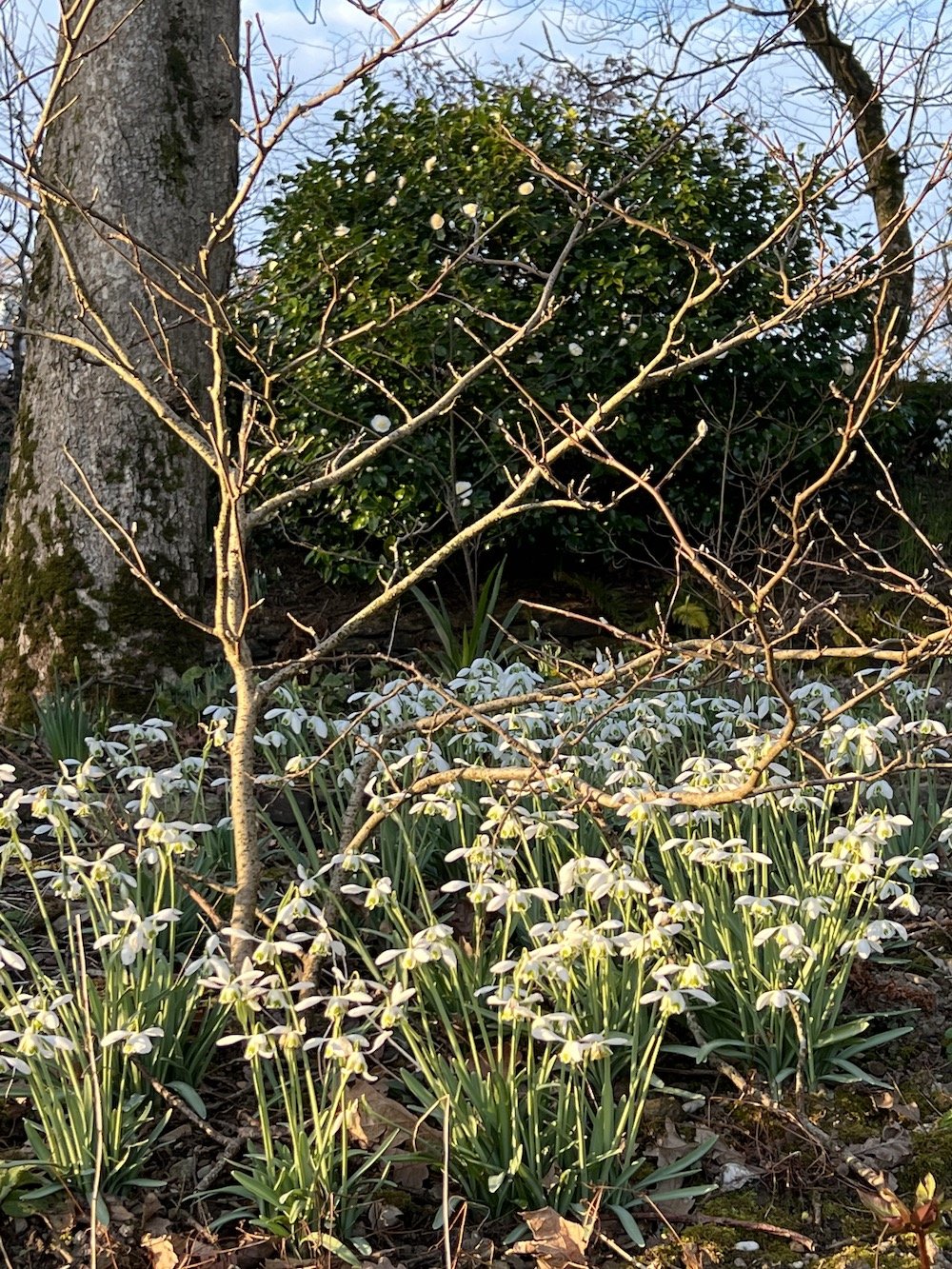
Behind the scenes at Muntons: Looking ahead to 2023
SEO Space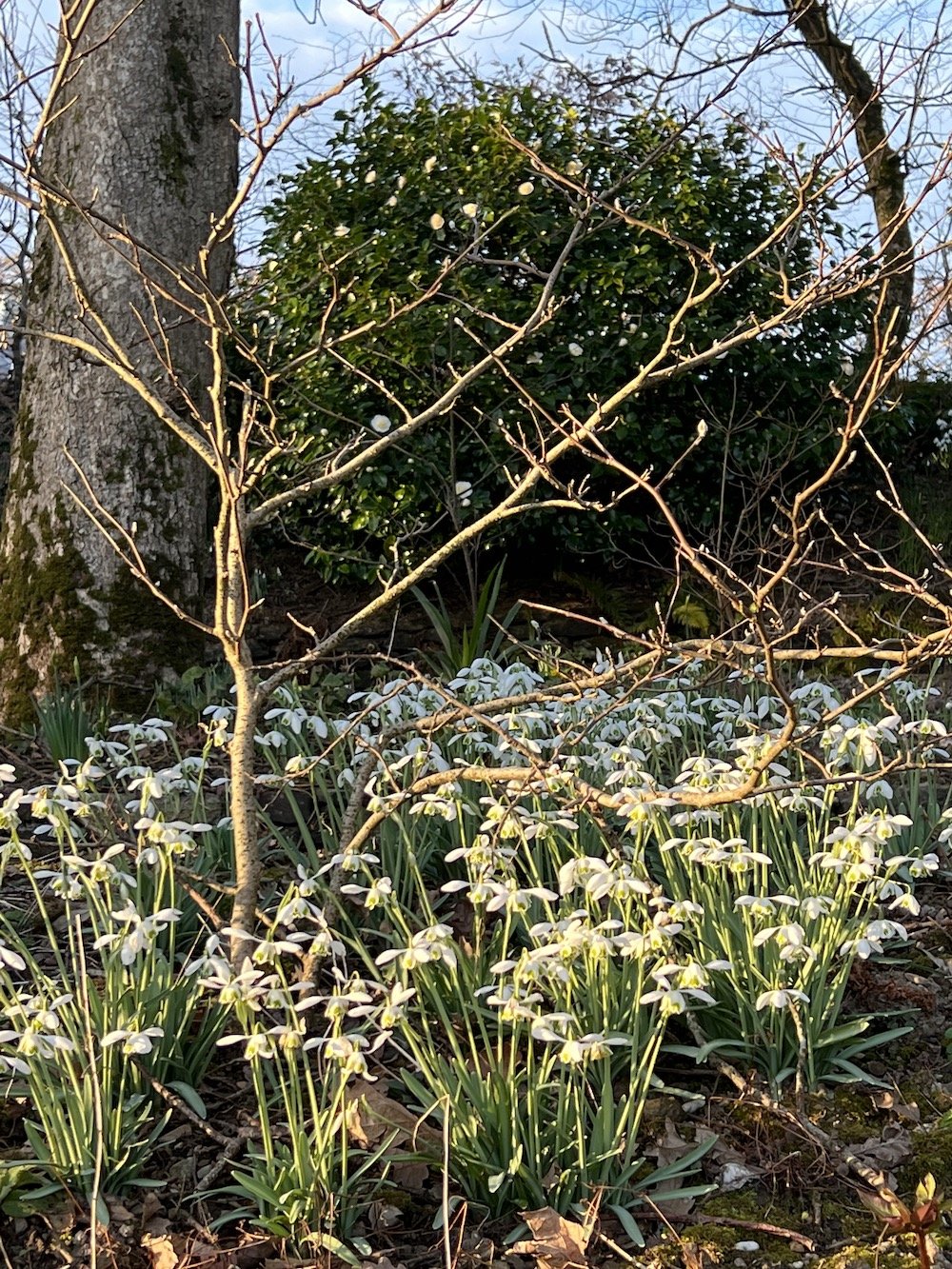
Carpets of Galanthus anticipate spring in Cornwall
I wrote earlier this month about the intense cold that has characterised parts of this winter and which has turned my thoughts away from the more marginally hardy plants that have survived the last 4 or 5 winters. I am still counting the full cost in terms of established plants and much-loved terracotta pots and am dismayed to see that the ammi majus, which self-seeded happily in the gravel of the courtyard garden over the last 4 winters, seems to have been defeated by the last cold snap.
The apple trees that I planted against our espalier frame three seasons ago are now well established and bore their first fruit last autumn.
-
The lateral branches on an espalier are formed by cutting the leading shoot back to 5-8cm above the training wire (the exact position of the cut will depend on the bud layout)
-
The object is to find two buds pointing in opposite directions along the line of the wire. These will form the next tier of branches
-
The cut is then made above the bud immediately above the two selected to become branches (a clean, slanting cut)
-
A system of notching the branch buds helps to ensure that they do what you want. A centimetre above the bud, a notch is made in the shoot so that a shallow sliver of bark and wood falls away – this encourages the stems to grow away at a wide angle
-
As the side shoots grow, attach them to a cane and gradually bring them down so that eventually they can be tied in to the horizontal wires – don’t rush this stage, it may take a season to tie in the growth; branches grow more vigorously the nearer to the vertical they are so let them get off to a good start before bringing them down to the training wire
Once the framework is established, pruning simply aims to reduce the side shoots (laterals) arising directly from the branches to fruiting spurs about 3” long
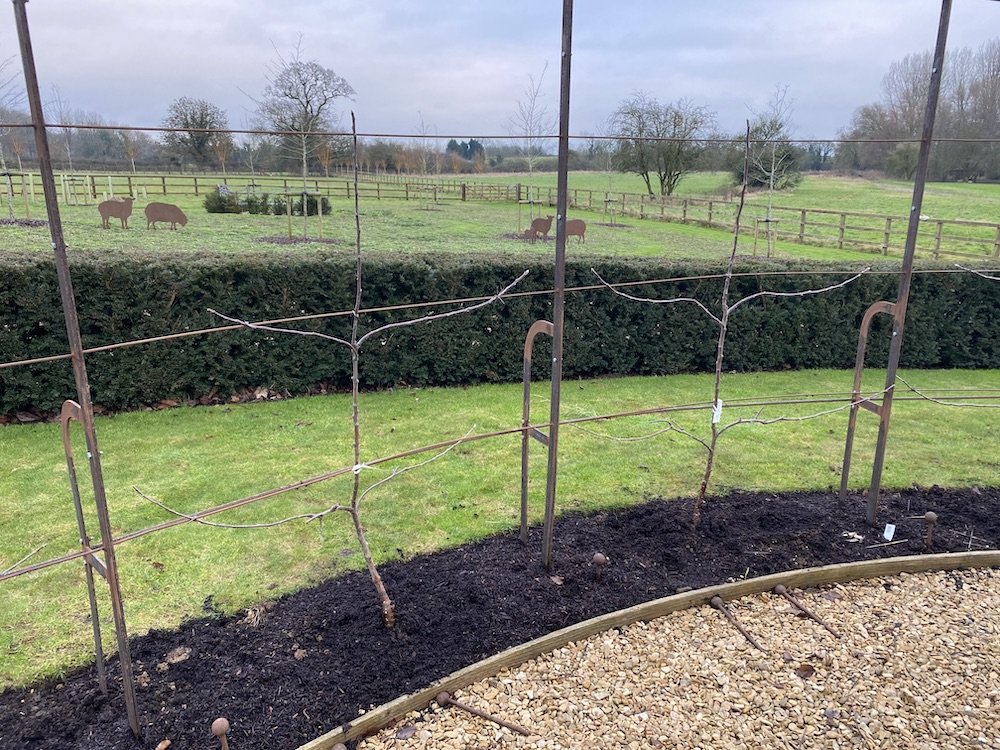
The newly planted espalier three seasons ago
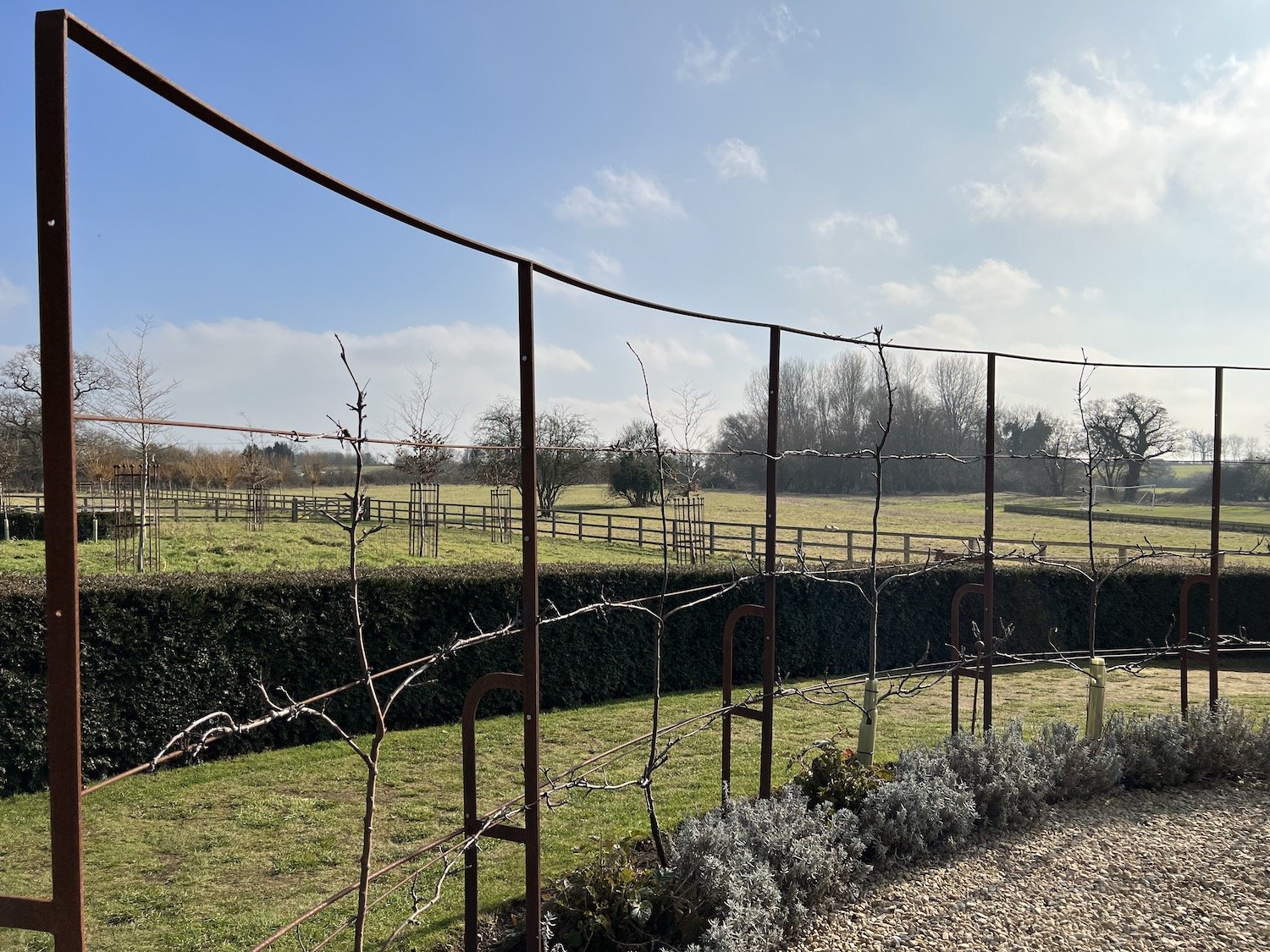
Much of the framework of the espaliered apples is now established
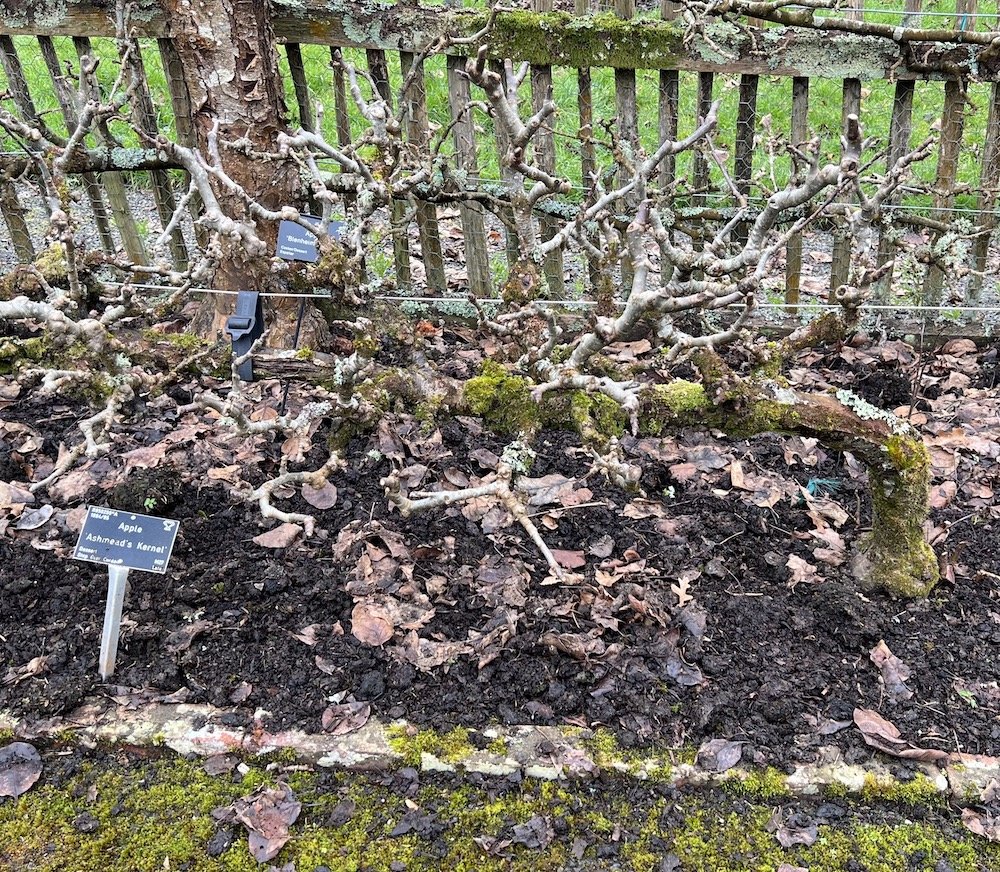
Well established step-over apples at RHS Rosemoor (the principal of pruning for fruit is the same as for espaliers)
I am excited to trial a number of new supports this spring. I love nepetas and have several cultivars in the borders but, even with a good haircut after flowering, they do have a tendency to flop, as does another favourite, geranium ‘Roxanne’, which trails its lovely violet blooms over everything by the season’s end. This year I hope to keep them a little more contained under Lobster Tops – I have used the medium size over nepetas and geum ‘Totally Tangerine’ and the small one over geranium ‘Roxanne’.
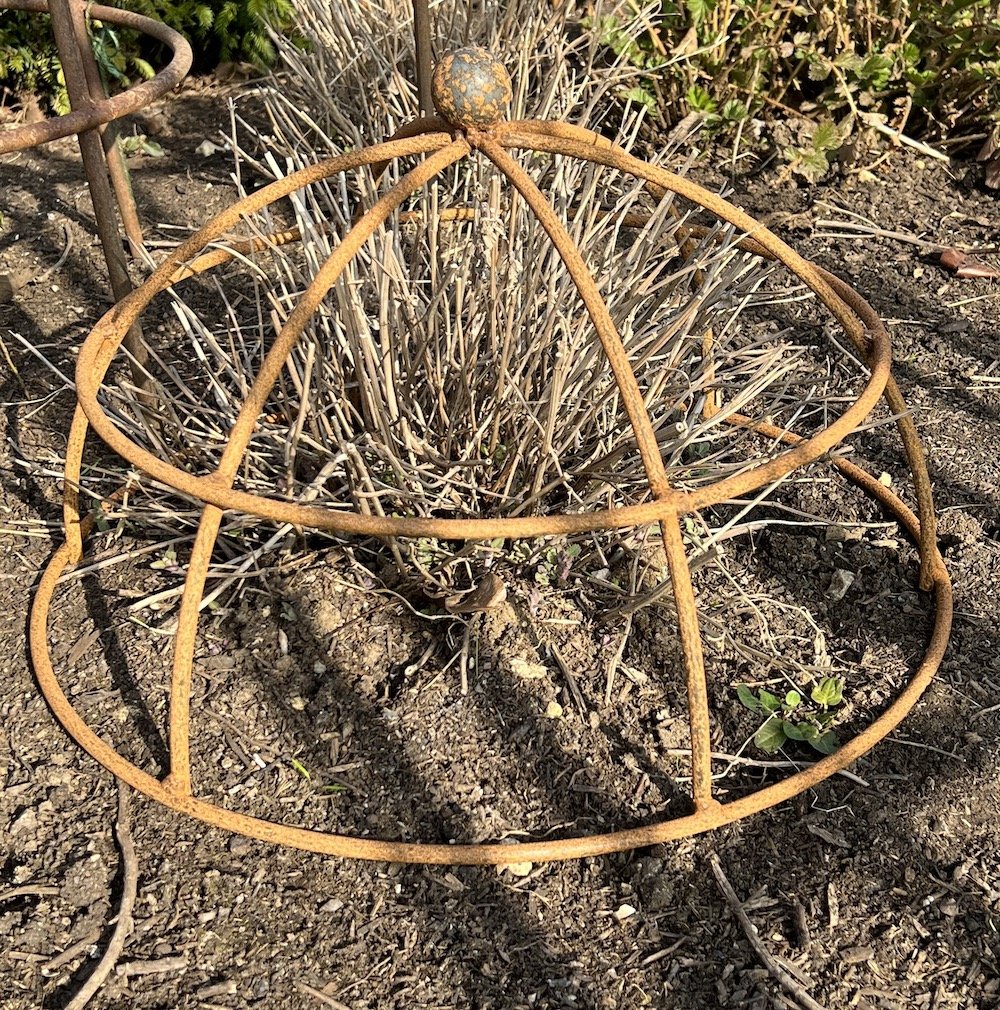
A medium Lobster Top is in place over a nepeta plant

A medium Lobster Top covers geum ‘Totally Tangerine’
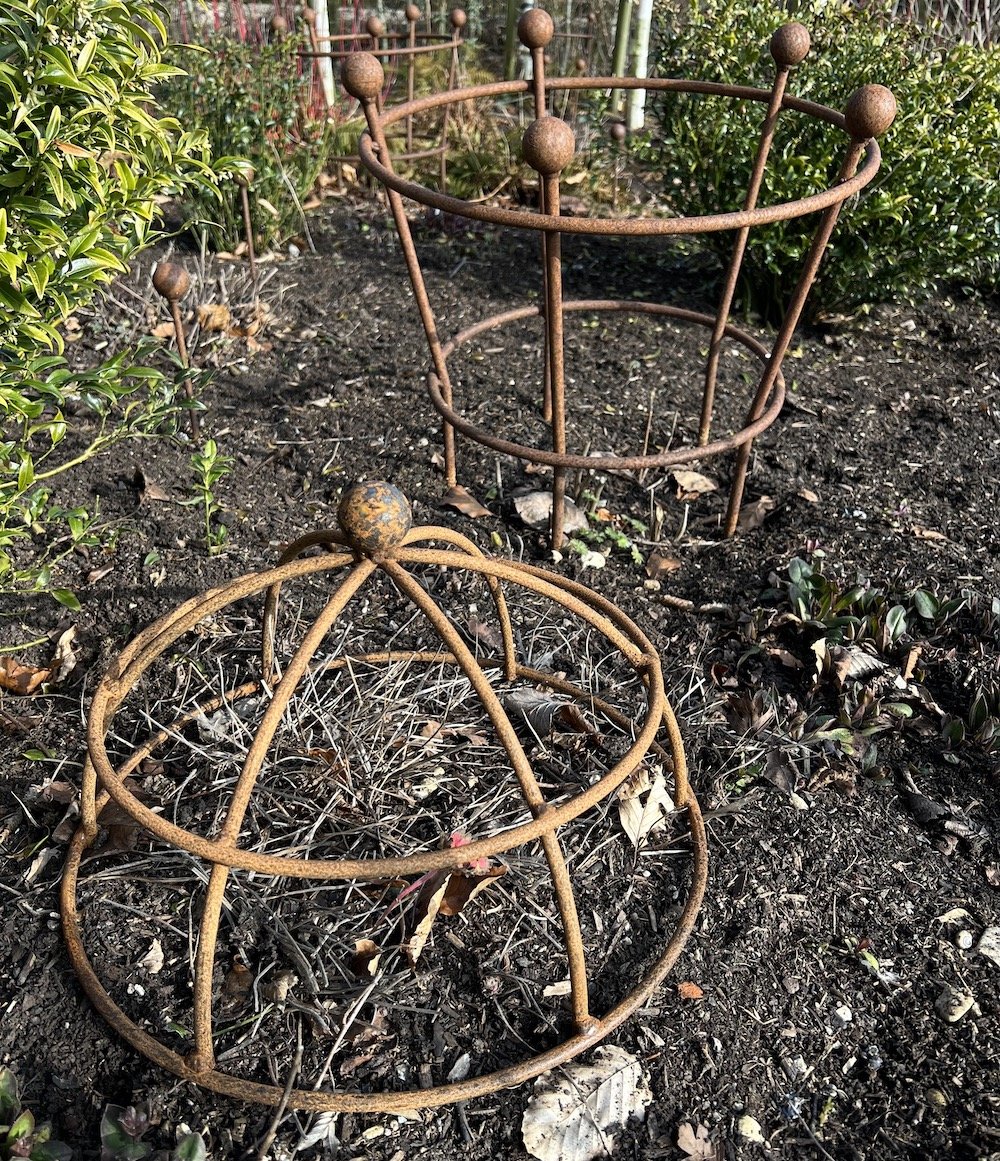
A small Lobster Top covers geranium ‘Roxanne’
Another new product, our Cloche and Border Hoops, have already been installed over my cutting bed. When frost is forecast, I shall throw fleece over them and fasten it down the sides of the raised bed to protect the alstroemarias and dahlias that I left in there over winter. I shall also use them in the herbaceous border, pushed in firmly, to hold back large plants that have a tendency to flop forwards – perhaps overlapping them as we do with the small edging hoops.

Cloche and Border Hoops in place in the cutting bed
